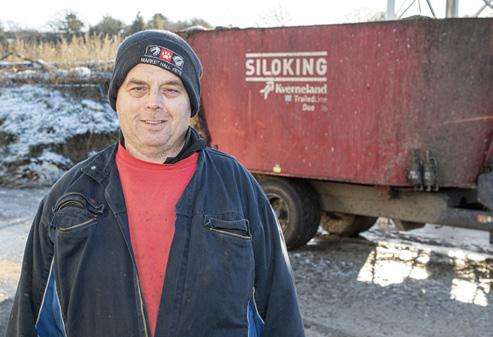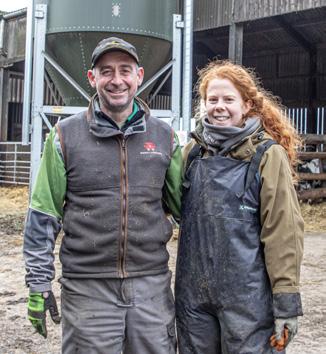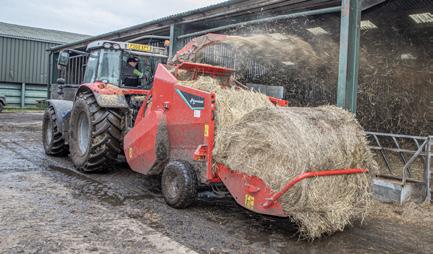
2 minute read
UPRATED SHREDDING PERFORMANCE
As an ambassador for local dealer Clarke & Pulman, Amy ‘Ginge’ Wilkinson is kept busy testing kit at the 800-acre White Otter Farm near Southport, where she farms with her dad, David (pictured).

For Clive Breeze, the ability to operate a reliable and efficient feeder day in, day out, backed up by an equally reliable dealer, is why he continues to operate a Kverneland Siloking mixer wagon. Her opinions often make it onto Instagram and other social media platforms, as she provides an insight into her life on the family-run farm. Though one piece of kit she recently tested, a Kverneland 863 shredder-bedder, proved such an improvement that it ended up being bought.
“I was very glad to try this one out, as our old Kv bedder had become a bit temperamental after 10 years of use and abuse,” explains Amy. “And over a week’s test, we saw such an improvement with the new 863, that I persuaded Dad to buy a new one.” of pedigree dairy cows and followers. Rations can include blend, whole crop wheat, clamp and baled silage, with straw mixed in for dry cows.
With around 600 head of beef to bed on a daily basis through the winter months, the Wilkinsons are kept busy. And any unwanted breakdowns mean lost time and reduced efficiency.
“It’s all about feed quality, and the mixer wagon delivers a light, fluffy ration that’s not overmixed,” explains Clive. “While good quality forage brings us extra litres and better milk quality, having the right dry cow mix is also essential to prepare freshly calved cows for their return to milk.”
Supplied by JE Rees, the 16 cubic metre trailed Duo has proved robust, and Clive knows what to expect from the machine and his dealer.
“There’s always someone at Rees’ that answers the phone, and for me, that’s a great level of customer service that goes beyond standard business hours,” he adds.
With silage made by contractor, Clive says trying a multi-cut system in 2021 didn’t bring the improvement in forage quality he had first hoped for.
“We took six cuts, but the forage was simply too rich for the cows,” he says. “So this last season, we ended up with a few round bales during third cut because of the very hot dry weather. And those bales proved to be a game changer in the ration.”
Clive says that having slightly longer, drier forage has improved digestibility, taking just a few extra minutes to mix.
“It’s almost haylage that we add in, and it seems to work like rocket fuel for my herd,” he says. “And now I want to have one bale available every day, to put into the ration with the clamp silage.”
“We shred around 16 round bales/ day, blowing the chopped straw into the pens, and it’s the sort of kit that you rely on – it needs to work,” she says. “We don’t feed with it – but it has to spread straw well, so we can make the most of our wheat straw.”

Amy noted that compared to the older version, this newer 863 model is a lot more powerful, with a wider spout and a more open intake to keep straw flowing through the rotor.
“The 863 is definitely a massive step up and a vast improvement all-round,” says Amy. “Our bales are stacked outside, which means we get our fair share of wet straw to deal with.”
“And we could block the old machine quite easily with wet bales, where this one just seems to eat its way through straw without struggling,” she adds. And it’s a point that Dad David agrees with.
“It’s a far superior machine,” explains David. “This model also has a stronger six-stud axle which is better at carrying two wet round bales, plus there’s a wider, stronger spout and the ability to blow straw further, at lower revs.”







